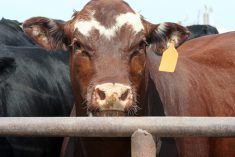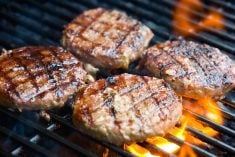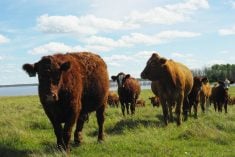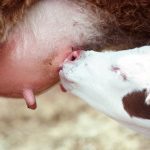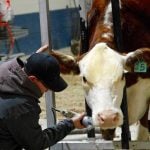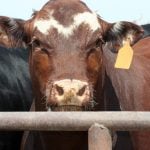Compared to last week, Western Canadian yearling prices were relatively unchanged while calves were once again $2 to $4 lower. Featherlight bawlers were down $4 to as much as $8 from week-ago levels. The tight feed grain supply situation continues to set the price structure for feeder cattle. Yearlings straight off grass held a slight premium over those cattle coming off a light grain ration.
Order buyers were aggressive on large strings of premium genetic cattle but there was little slippage on small mixed groups. Major feedlot operators were anxious to secure early ownership with the December live cattle futures near contract highs. Ontario demand was noted as far west as Alberta; U.S yearling prices have also climbed $8 to $10 over the past two weeks which is underpinning the Western Canadian market.
Read Also
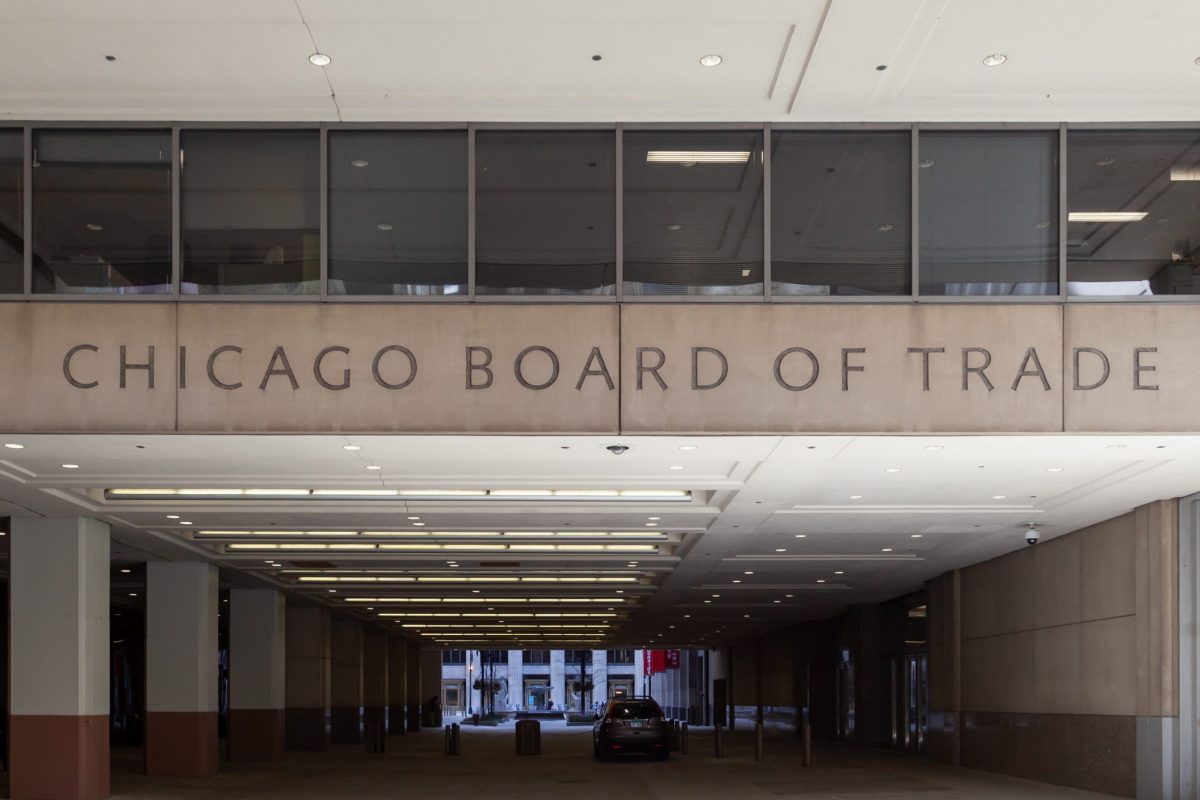
U.S. grains: Soy, corn dip on farmer selling; U.S.-China trade talks in focus
U.S. soybean futures retreated on Friday from a one-month high, pressured by a dip in crude oil prices and a round of farmer selling while market players awaited upcoming U.S. trade talks with China, the world’s top soybean buyer.
In Central Alberta, medium frame red white face steers averaging 840 pounds straight off grass were valued at $189; a larger string of low flesh Charolais blended heifers straight off grass weighing a hair over 850 pounds with full health records were quoted at $182.
Many auction barns in the eastern prairie regions held their first sale of the season last week. In Manitoba, Angus based steers weighing 810 pounds sold for $201 and black white face heifers averaging 860 pounds dropped the gavel at $$179. A small group of larger frame Simmental steers straight off grass averaging just under 900 pounds were valued at $187 in the Lethbridge area.
South of Edmonton, semi-weaned angus based heifers on full health program averaging around 600 pounds were quoted at $179; a small string of similar quality and weight steers weighing just over 600 pounds were valued at $210. In Manitoba, black heifers weighing 700 pounds were reported at $181 and black steers averaging 700 pounds traded at $201. Calves in Central Saskatchewan appeared to trade $3 to $5 above other regions of Western Canada. In the Saskatoon area, small groups of steers weighing 600-625 pounds were quoted from $215 to as high as $220.
The November feeder cattle futures are at the highest levels since January of 2016 despite the higher corn values. Feedlots that choose to wait will not see lower prices later in fall. In fact, Lethbridge yearling prices could be $10 higher by the time November rolls around. Given the drought like conditions, producers are selling 30 to 60 days earlier than normal which will result in below normal supplies later in fall.




